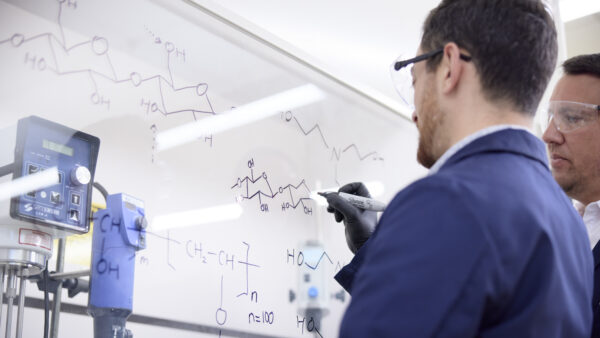How one company looks to measure canopy temperature to reduce plant stress.
For the past several years, researchers have been working to figure out how drone technology can benefit crop production and crop improvement. They’ve figured out how, but have since been trying to work through the logistical challenges of being able to attach more sensors to a drone and finding that ideal weight balance. Then there’s the issue of getting all that data back to the person who can make sense of it and finally to the end user, not to mention air space and safety.
But a new technology might make all these efforts obsolete. That’s right, the challenges scientists and researchers have been trying to tackle with high throughput phenotyping and drones could be put to rest with the new Smartfield technology.
An agricultural information company, Smartfield was founded on an exclusive license from a U.S. Department of Agriculture patent on BIOTIC (biologically-identified optimal temperature interactive console for managing irrigation. Since then the company has added an additional patent around measuring plant canopy temperature.
Plants have a leaf temperature at which they perform best, explained Mario Carrillo, Smartfield vice president of agronomic services, during the 2016 Exceed the Seed Symposium Dec. 6 in Chicago. This is called optimum plant canopy temperature (OPCT), he said, noting that Smartfield can identify OPCT for any crop.
During the presentation, Carrillo said that about 95 percent of what Smartfield does has to do with canopy temperature. Even different varieties, lines or hybrids of the same crop species can have different OPCT, he said, noting that for corn the optimum temperature is known to be 82 degrees Fahrenheit and is the same with cotton.
Prior to joining Smartfield, Carrillo served as director of strategic seed projects at Chromatin, Inc. and held leadership positions at Monsanto as project development manager for DEKALB corn germplasm and as technology development manager for specialty crops.
“When a plant is under stress, it loses the ability to regulate to its OPCT,” he said. “This impacts yield. The more time a plant spends in a stressed state, where it cannot correctly modulate canopy temperature, the higher the magnitude of the yield loss.”
Carrillo added that it’s not just about stress mitigation, but also seed enhancement.
The team of engineers at Smartfield developed a technology called the FIT System that collects 96 data points per day to provide a complete daily picture. You see, Carrillo said that canopy temperature is a direct, integrated measurement revealing plant health and continuous canopy temperature provides a complete picture of the growing season.
The Smartfield FIT System is completely wireless and powered by the sun. It’s made up of an infrared camera, visual spectrum camera, high performance pan-tilt system, customer hardware, a 50-foot pneumatic mast and a solar panel system.
A network of advanced sensors are placed throughout the field, sending a constant stream of data to the researcher or grower, and that constant capture and stream of data is what sets Smartfield apart from other companies.
Joel Hohenberger, Smartfield chief technology officer, says that the temperature of the crop is taken every minute. Than an algorithm, averages the temperature every 15 minutes and that information is sent back to the base station every 30 minutes.
In addition to canopy temperature, sensors measure soil moisture and irrigation rates, wind speed, barometric pressure, ambient temperature, relative humidity and rainfall. Hohenberger explains that all this is collected and then sent back to the base station where it is run through the algorithms, analyzed and sent back to the growers through a website.
The other piece of the equation is what Carrillo calls the Smartfield Stress Unit, its own proprietary index of stress that reduces those 96 data points per day into one data point per day, which is easier to manage for both growers and researchers.
“We have big data, but a lot of companies have big data,” Carrillo said. “We make big data actionable and meaningful to clients and the user. Our No. 1 goal is to help the grower recoup their return on investment, because if they are successful, then everybody is going to be successful around them.”
Users can make timely decisions based on the data we are collecting. If you’re receiving your data every two to three weeks, it might be too late. We try to make that data transfer timely. Sometime within 30 minutes of the collection and the result is financial success.
“Our system provides more than big data,” Carrillo said. “It allows researchers to screen more products per season to facilitate faster and better product selection and advancement.”
Smartfield is able to blend the high temporal data with the high spatial data, allowing researchers to look at hundreds of plots without losing that very plant specific data.
“We believe the long-term solution will be a blend of both macro and micro databases to achieve a spatial, temporal balance,” Carrillo said.
He explained the FIT System can be used to evaluate genotypes, identify the presence of diseases
If wanting to compare genotypes, the technology allows researchers to identify the strongest performers early in the season and facilitates product selection before yield assessment for faster overall product advancement, he said.
When looking to detect disease, diseases typically affect the vascular tissue of plants, resulting in a restriction of water movement and thus, higher canopy temperatures. Carrillo said that susceptible entries showed elevated canopy temperatures four to seven days prior to visual symptoms. They’ve been able to detect sudden death syndrome in soybeans and Fusarium and Verticillium in cotton.
Being able to detect pest and disease early can lead to a more efficient use of pesticides.
Based in Lubbock, Texas, where crops are subjected to heat and drought stress and irrigation is commonly relied upon. Hohenberger says that by allowing farmers to be more efficient with both irrigation and resources, in some cases they’ve been able to save 40 percent of the water that some products would be calling for.













